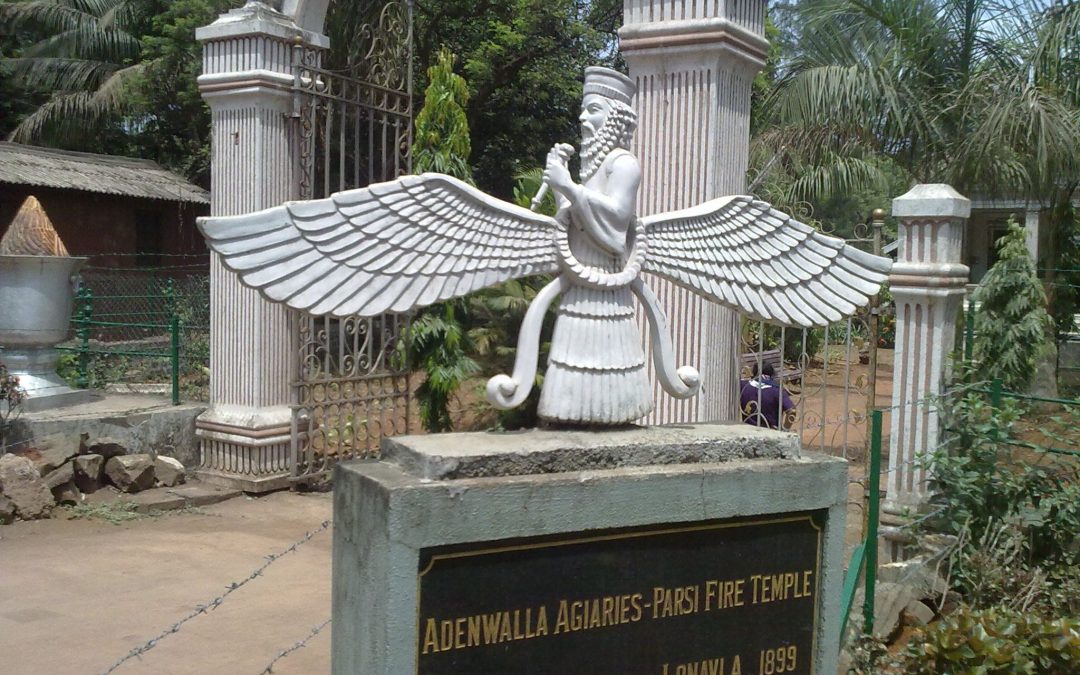After the British conquest of Aden in 1839 A.D., and its declaration as a free port, several Indian traders, including Hindus, Muslims and Parsis, started settling down in this thriving city. According to the 1872 census, there were only 121 Parsis out of the total population of 19,289 of Aden, but by 1911 census, the number of Parsis living in Aden increased to 384, of which 268 were men and 116 were women.
In 1840, Eduljee Muncherjee Colabawalla became Aden’s oldest shipping chandler, when he started his business as a supplier of shore and shipping requirements. Another illustrious Parsi merchant, Cowasjee Dinshaw Adenwala (1827-1900), arrived in Aden in 1845 and soon transformed the port of Aden into a facility capable of accommodating the streamer traffic between the Indian Ocean and Europe. By 1846, the Parsis began to move into the gum, hides and coffee trade, and they seemed to be the only members of the commercial community with large enough capital to buy the cargoes of American ships.
In 1856 Cowasjee partnered with Captain Luke Thomas in his banking business, which became a limited liability company in 1857, known as Luke Thomas & Co. In June 1863, Cowasjee signed a 10-year contract for the restoration of the ‘Playfair’ Tank and six other hill tanks at Tawila, along with two other merchants, a Persian, Hasan Ali and another Parsi, Eduljee Manekji. This contract was renewed in 1873 for further 30 years, and the tank water began to be sold commercially.
After the opening of the Suez Canal in 1869, the British India Steam Navigation Company (BI) secured the services of the Cowasjee Dinshaw as their agent. By the 1890s, Cowasjee started operating tiny steamers between Suez and Mukalla to provide a regular service for passengers, cargo and mail. Amongst his many ventures, he had an entire floating dock shipped from Britain in 1895, which was known locally as the “Dinshaw Pontoon”.
In 1853 A.D. Cowasjee built a small Fire Temple in Tawila, Crater area in Aden, which was eventually converted to an ‘Atash Adran’ in 1883 A.D. A ‘dokhma’ (‘Tower of Silence’) was also built in Aden, which was used by the Zoroastrians for exposure of their dead. The Cowasjee Dinshaw family also built a mosque for the local Muslim population, known as the Cowasji Masjid, which is still in use in Aden.
Cowasjee’s son Hormusji Cowasjee Adenwala (1857-1939) expanded the family shipping business and established new routes to East Africa. He had the high honour of reading the address of welcome to the Prince of Wales on his arrival at Aden on 12th November 1921 on his way to Bombay. He was an important member of the Parsi community and was knighted by the British in 1922. In Aden, the Dinshaws undertook considerable charitable work in the educational, religious and medical fields.
After the formation of the People’s Democratic Republic (PDYR) in 1967, the Fire Temple and its associated properties, then worth Rs 1 million, became the state property. By then the number of Parsis in Aden dwindled to only 20 and their main concern was preventing any possible desecration of the Holy Fire. Cowasjee Nusserwanji Dinshaw (1926-2010), the great grandson of Cowasjee Dinshaw Adenwala, requested the intervention of Prime Minister Indira Gandhi and Foreign Minister Y.B.Chavan to use their good offices with the PDRY government for transferring the Holy Fire to India. Eventually, the Chairman of the Presidential Council of PDYR, Salem Robya Ali, agreed to allow the fire to be taken to India. The condition was that it would have to be moved out at midnight.
The only practical way to transport the ‘Holy Fire’ was by air. Accordingly, on Saturday, November 13, 1976, at around 9 p.m. a special Air India chartered Boeing 707 “Lhotse”, with an all-Parsi crew under Capt. Sam Pedder with Capt. Balsara as co-pilot but no air hostesses took off from Bombay and landed at Aden. The aircraft also carried a batch of six priests under the leadership of Dastoorji Kaikobad Ferozeji, the high priest of Udwada.
The ‘Holy Fire’ was placed in a special aluminum urn built by N.S.Mistry of the Engineering department of Air India. As the aircraft took off, the Yemeni officials gave it a 21-gun salute, in the presence of high-ranking Yemeni officials and Imtiaz Ali, India’s Ambassador in Aden. The ‘Holy Fire’ arrived the next morning at 7.15 a.m. in Bombay and was initially kept at the Soonawala fire temple in Mahim before it was enthroned at the Lonavala Agairy later.
Thus, the historic journey of Parsis in Aden ended. One can still see the ruins of the ‘Tower of Silence’ in the Crater area of Aden on a small plateau of the Shamsan Range south of the Tawila Tanks.
****
